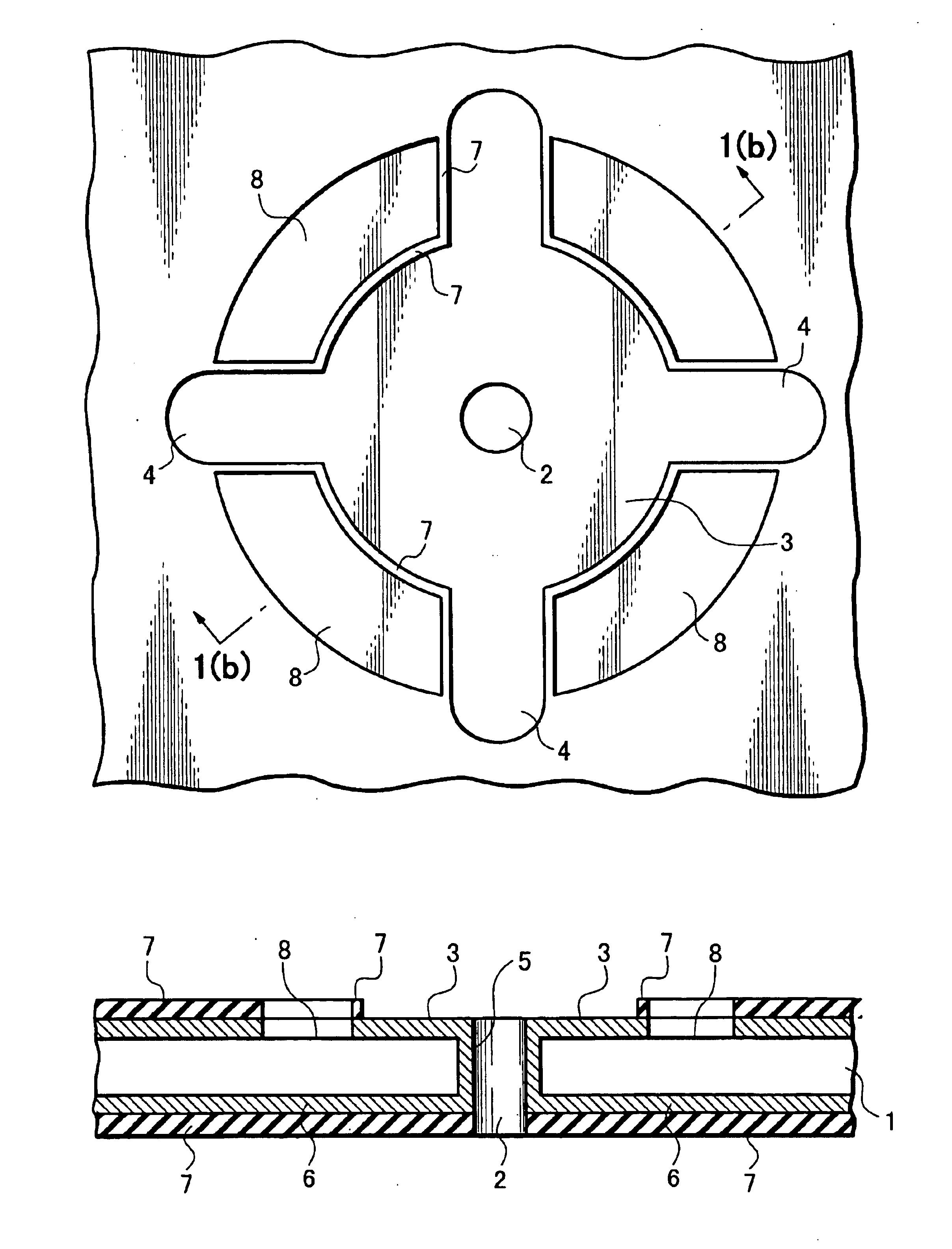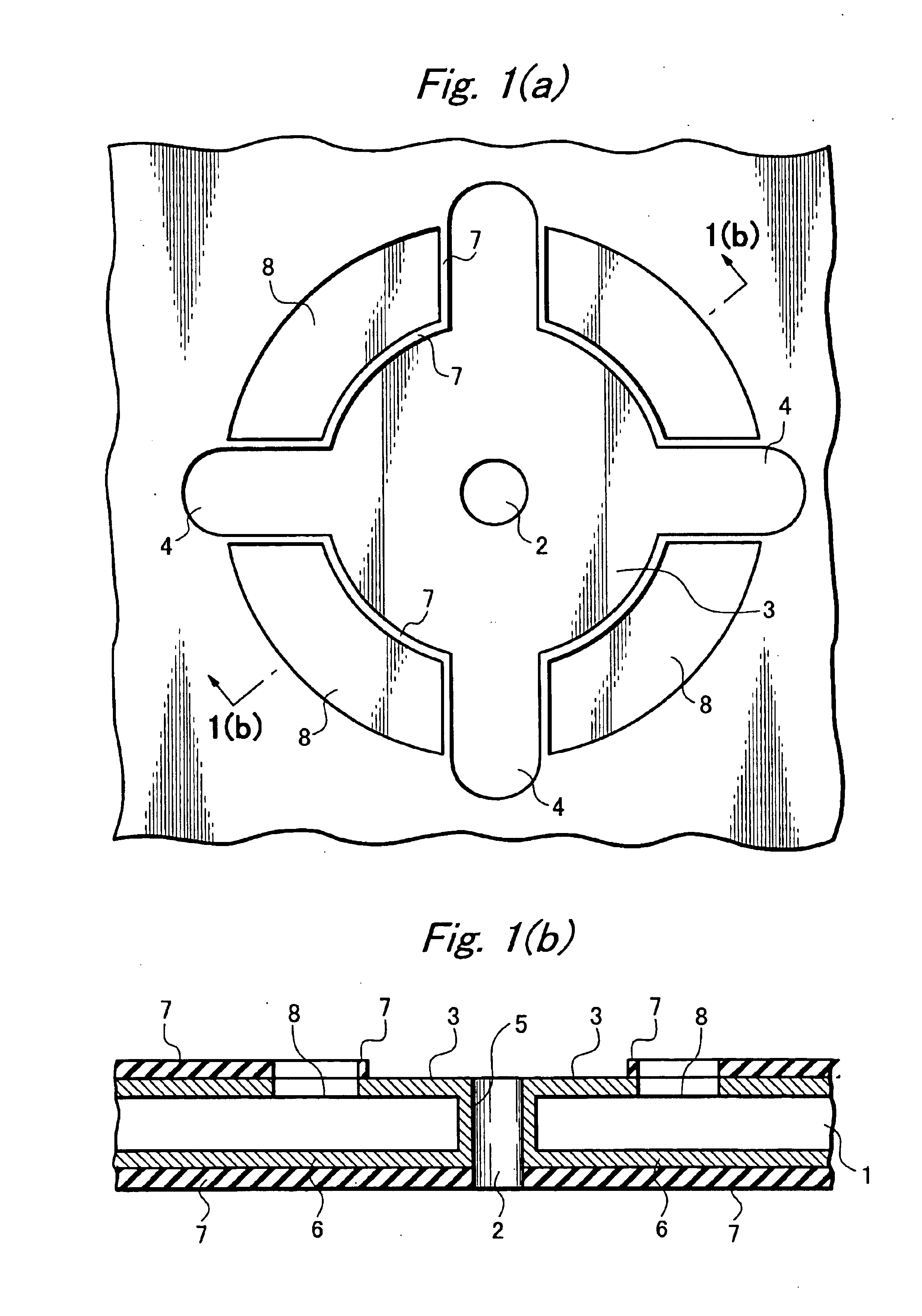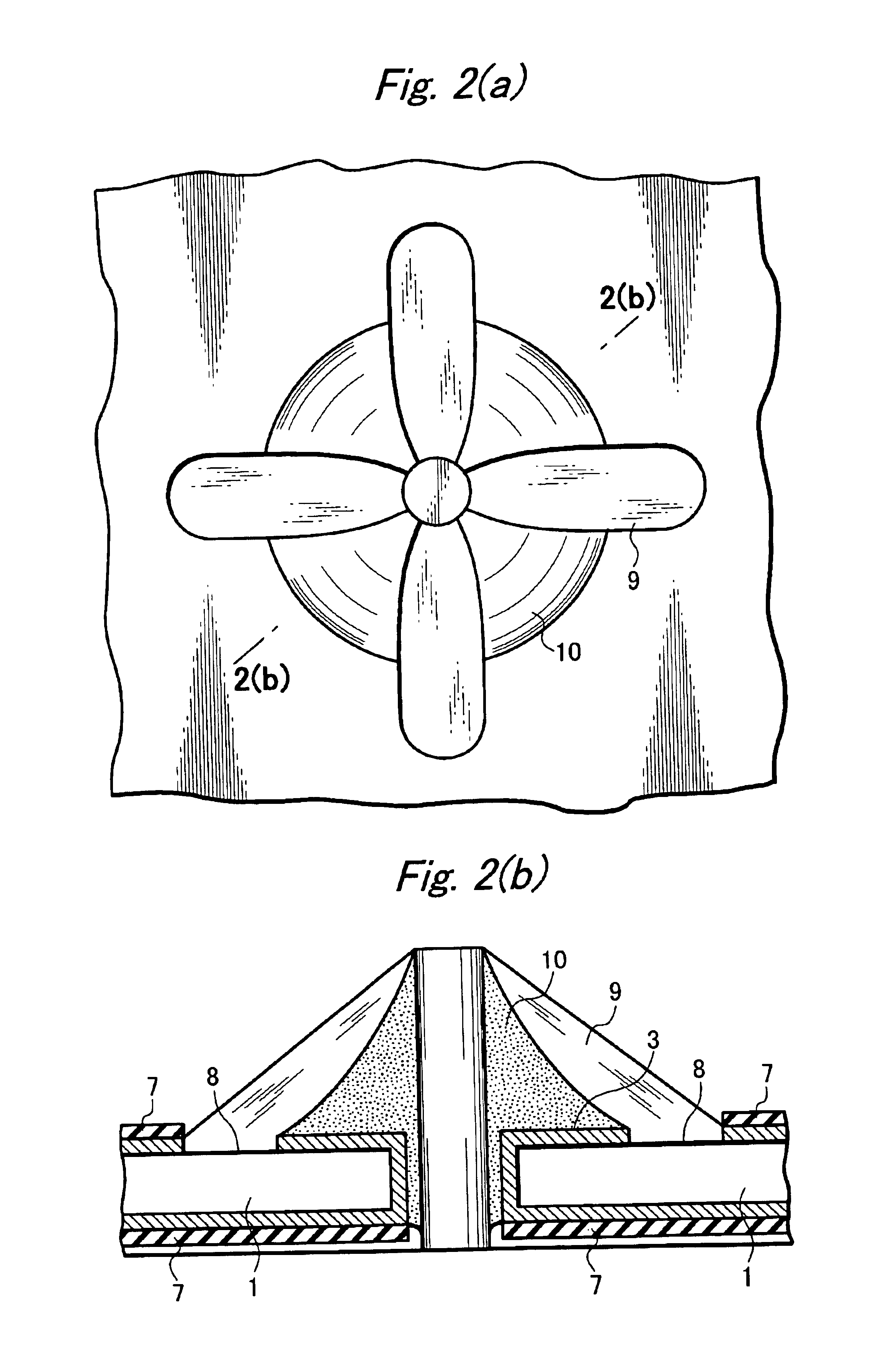Printed circuit board and soldering structure for electronic parts thereto
a printed circuit board and electronic part technology, applied in the direction of metal working apparatus, manufacturing tools, soldering apparatus, etc., can solve the problems of affecting the quality of printed circuit boards, parts shaken loose from printed circuit patterns, tedious and time-consuming work, etc., to prevent thermal energy from leaking outwards.
- Summary
- Abstract
- Description
- Claims
- Application Information
AI Technical Summary
Benefits of technology
Problems solved by technology
Method used
Image
Examples
Embodiment Construction
Referring to FIGS. 1(a) and 1(b), a printed circuit board has circuit patterns printed on its substrate 1. As shown, a first circular land 3 has a through hole 2 to insert the terminal of a selected electric or electronic part or device, and four second radial lands 4 are contiguous to the first circular land 3, extending outwards therefrom. The substrate 1 has circuit patterns 6 printed on its opposite sides, and electric or electronic parts or devices are mounted and joined to the composite lands with their terminals inserted in the terminal holes 2 and soldered to the composite lands.
The composite land of copper foil is connected to the underlying circuit pattern 6 on the rear side via the conductor layer 5, which is applied to the inner circumference of the terminal hole 2, as seen from FIG. 1(b). A selected part or device is mounted on the rear side of the substrate 1 with its terminal inserted into the terminal hole 2.
As seen from FIG. 1(a), the surface of the printed circuit ...
PUM
| Property | Measurement | Unit |
|---|---|---|
| electrically | aaaaa | aaaaa |
| electrically conductive | aaaaa | aaaaa |
| area | aaaaa | aaaaa |
Abstract
Description
Claims
Application Information
 Login to View More
Login to View More - R&D
- Intellectual Property
- Life Sciences
- Materials
- Tech Scout
- Unparalleled Data Quality
- Higher Quality Content
- 60% Fewer Hallucinations
Browse by: Latest US Patents, China's latest patents, Technical Efficacy Thesaurus, Application Domain, Technology Topic, Popular Technical Reports.
© 2025 PatSnap. All rights reserved.Legal|Privacy policy|Modern Slavery Act Transparency Statement|Sitemap|About US| Contact US: help@patsnap.com



